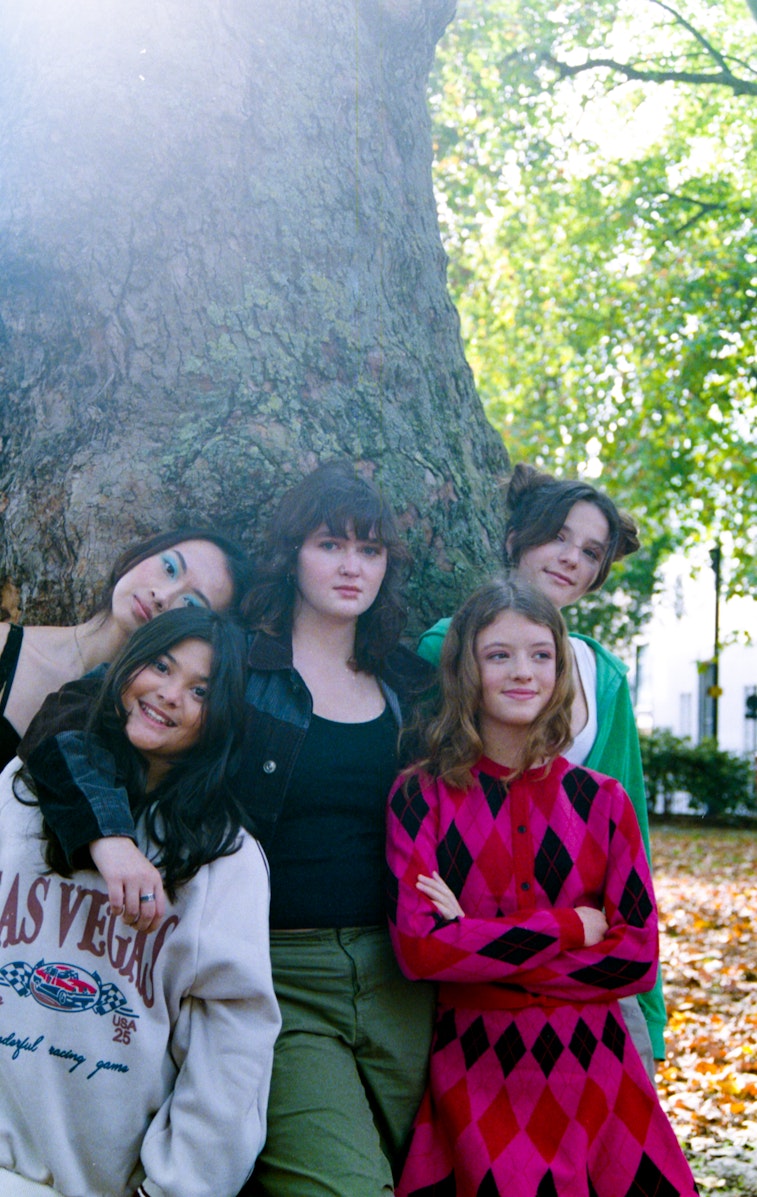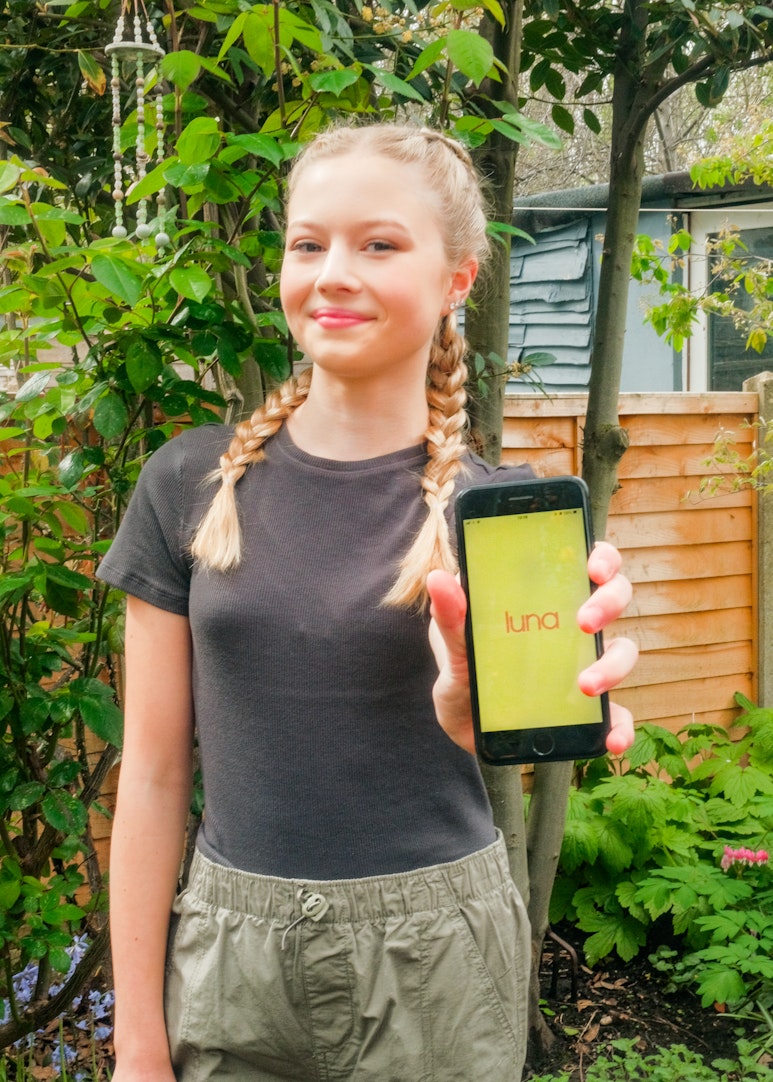
Understanding the stages of female puberty
The first signs + physical changes

Quick summary
- Puberty progresses in five stages, starting with hormonal changes, followed by breast development, body hair growth, growth spurts, and the onset of menstruation, eventually leading to full physical maturity.
- Body development occurs at different rates, emphasizing the importance of open discussions about hygiene, periods, and emotional well-being can bring them peace of mind.
- Support your teen by giving them guidance, reassurance, and access to reliable resources to can help them navigate this transition confidently.

Puberty is a key milestone in any young person’s life, marking the transition from childhood to adulthood.
For parents and guardians, understanding the stages of puberty can help you to provide the necessary support during this period of change.
So, we’re here to give you a quick overview of the physical, emotional, and psychological changes a tween or teen (assigned female at birth) will experience.
Understanding the stages of female puberty
Healthcare professionals divide the physical changes associated with puberty into what are known as “Tanner stages”.
We generally like to think of puberty as STAGES and not AGES as it varies so much, so you can apply these to your child’s development too.
Here’s a breakdown of the stages…
Stage 1: hormonal changes
At this stage, there are no outward physical changes.
The brain begins signalling the body to prepare for changes by producing hormones.
These hormones travel to the sex organs, causing them to produce oestrogen – in those assigned female at birth (AFAB).
Stage 2: the early signs
The onset of physical signs of puberty varies but typically begins around 8 to 11 years old in children AFAB.
If puberty starts earlier than this, you might want to learn more about "precocious puberty".
The first sign is usually the development of breast "buds," which are small lumps under one or both nipples. This stage is known as Thelarche.
Pubic hair may also start to grow.
It can be helpful to reassure your child that these changes are a completely normal part of growing up.
Stage 3: developmental milestones
Breast development continues, and pubic hair becomes thicker, along with other body hair such as under the arms. Girls (AFAB) also begin to experience a significant growth spurt.
This is a good point to start conversations about personal hygiene like showering daily, having a skincare routine, and using anti-perspirant, as increased sweat and oil gland activity can lead to body odour and acne.
Stage 4: menarche and continued growth
Menarche (the start of menstruation, or periods) is a significant milestone and typically occurs 1-3 years after the first signs of puberty, around age 12 on average in the UK.
One of the most asked about topics on luna is when teens will start a first period, so this is front of mind for many!
It can help to prepare your child for this event by discussing what to expect and how to manage periods – we've got some period dos and don'ts for this conversation on our website which are worth a look at, as well as a guide to talking to your daughter about her first period.
Our app luna's also got loads of advice that’s tailored to teens, explaining everything they need to know about periods, period products, period problems + more.
We also have a period tracker, so they can start to notice patterns and predict their next period.

During this time, physical maturing also continues, including breast development, thickening body hair, and changes in body shape, often with an increase in body fat around the hips and thighs.
Stage 5: development ends
By this stage, most girls (AFAB) have regular menstrual cycles, though it may take time for these to settle down (around 2 years).
Emotional changes are also significant during this period, as hormonal fluctuations can lead to mood swings, so it’s a good time to check in with them about this and help them with regulating how they feel.
You may also wonder whether it's normal to be lazy during puberty, but this may be down to how they're feeling, rather than reluctance to do anything.
At this stage, most achieve their adult height and full physical maturity, taking on a more adult appearance. Breasts and pubic hair also reach their adult size and form.
How we created this article:
luna's team of experts comprises GPs, Dermatologists, Safeguarding Leads and Junior Doctors as well as Medical Students with specialised interests in paediatric care, mental health and gynaecology. All articles are created by experts, and reviewed by a member of luna's senior review team.
Sources:
Family Services Hub "Stages of puberty: what happens to boys and girls" | Accessed 14.05.25
https://familyserviceshub.havering.gov.uk/kb5/havering/directory/advice.page?id=h6T2pWF5Y9YHealthy Children "Physical development in girls – what to expect" | Accessed 14.05.25
https://www.healthychildren.org/English/ages-stages/gradeschool/puberty/Pages/Physical-Development-Girls-What-to-Expect.aspxNHS "Early or delayed puberty" | Accessed 14.05.25
https://www.nhs.uk/conditions/early-or-delayed-puberty/NHS "Starting periods" | Accessed 14.05.25
https://www.nhs.uk/conditions/periods/starting-periods/Cleveland Clinic "Puberty" | Accessed 14.05.25
https://my.clevelandclinic.org/health/articles/22192-pubertyWe'd love to keep in touch!
Sign up to our parent newsletter for emails on the latest teen trends, insights into our luna community and to keep up to date
By signing up, you are agreeing that we can use your email address to market to you. You can unsubscribe from marketing emails at any time by using the link in our emails. For more information, please review our privacy statement.